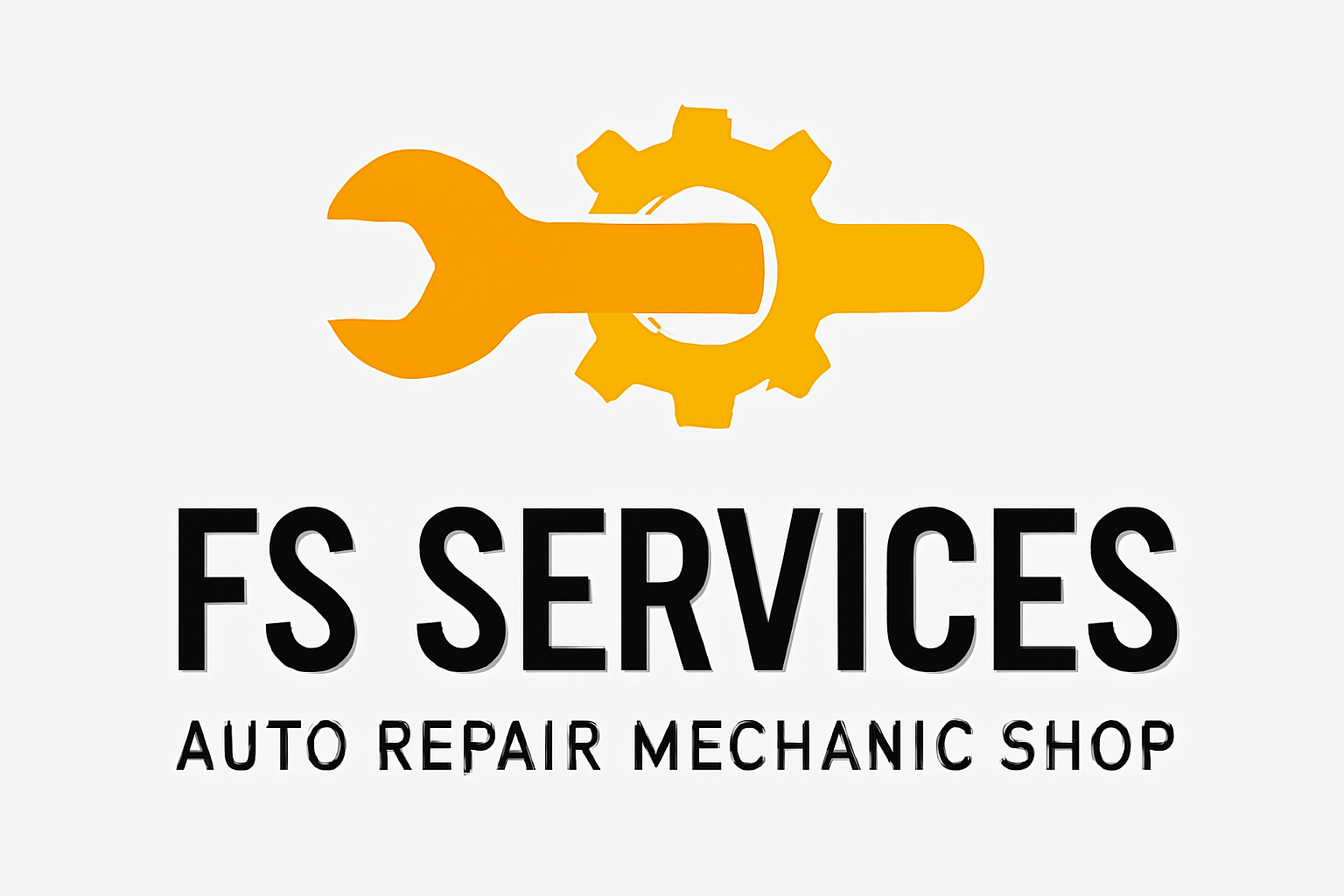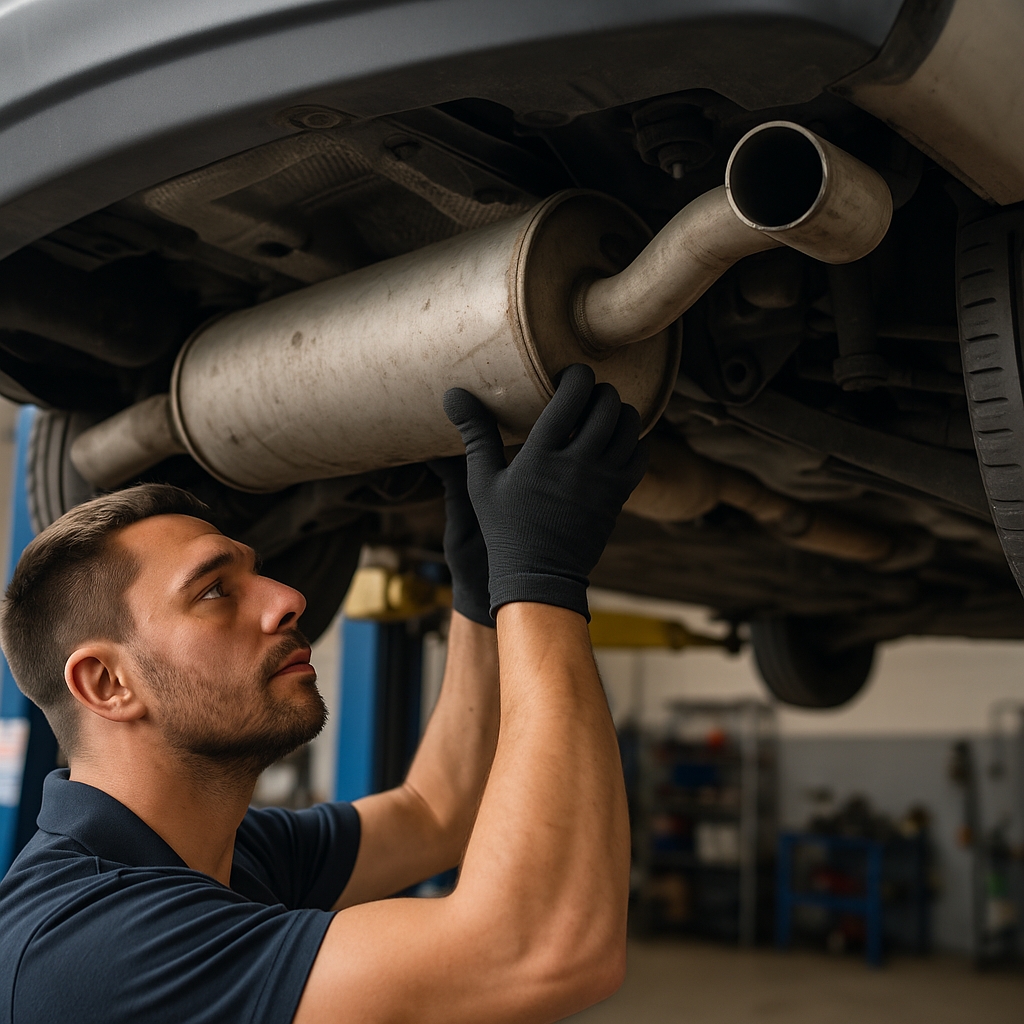Contacts Us
Have a Question?

Exhaust System
Exhaust System Maintenance: How to Keep Your Car Running Smooth and Quiet
Your car’s exhaust system does far more than just expel gases — it plays a critical role in your vehicle’s performance, efficiency, and safety. By removing harmful emissions, reducing engine noise, and improving fuel economy, a well-maintained exhaust keeps your vehicle in top shape.
In this article, we’ll explore how your exhaust system works, signs it may need attention, and preventative maintenance tips to help you avoid costly repairs down the road.
What Is the Exhaust System?
The exhaust system routes gases created during the combustion process safely out of the engine and away from the vehicle. It’s made up of several components that work together:
Exhaust manifold: Collects gases from the engine cylinders.
Oxygen sensors: Monitor oxygen levels for efficient fuel combustion.
Catalytic converter: Converts harmful gases into less toxic emissions.
Resonator and muffler: Reduce noise from exhaust gases.
Exhaust pipes: Carry gases to the tailpipe and out of the vehicle.
A small fault in any of these parts can lead to performance issues, noise, and increased emissions — making maintenance crucial.
Why Exhaust System Maintenance Matters
A well-maintained exhaust system ensures:
Optimal engine performance: Proper flow allows the engine to breathe efficiently.
Fuel efficiency: Clogged or leaking systems cause the engine to burn more fuel.
Reduced emissions: Keeps your car eco-friendly and compliant with regulations.
Quieter operation: Mufflers and resonators control sound levels effectively.
Safety: Prevents carbon monoxide and harmful gases from leaking into the cabin.
Neglecting the exhaust system can cause engine strain, rust buildup, reduced power, and even dangerous gas leaks — all of which are costly and hazardous.
Signs Your Exhaust System Needs Attention
Preventative maintenance starts with early detection. Watch out for these common warning signs:
1. Loud or Unusual Noises
If your car suddenly sounds much louder, there may be a hole or crack in the muffler or exhaust pipe. Hissing, rattling, or rumbling noises can also point to leaks or broken hangers.
2. Reduced Fuel Efficiency
When your exhaust system is blocked or leaking, it affects backpressure and combustion efficiency, forcing your engine to use more fuel.
3. Vibrations or Rattles
Unusual vibrations through the steering wheel or floorboards can indicate a loose or broken exhaust component.
4. Visible Rust or Holes
Moisture, road salt, and debris cause corrosion. Regularly check for rust on pipes and joints, as even small holes can quickly worsen.
5. Strong Exhaust Smell
If you smell exhaust fumes inside the vehicle, it’s a serious safety issue. Carbon monoxide leaks can be deadly — get your car checked immediately.
Preventative Maintenance Tips for Your Exhaust System
Keeping your exhaust in top condition doesn’t require advanced mechanical knowledge — just consistent care and awareness. Here’s how to prevent major issues:
1. Inspect the Exhaust System Regularly
Perform a visual inspection every few months or at each oil change:
Look under the vehicle for rust, cracks, or loose connections.
Check hangers and clamps that hold the exhaust in place.
Ensure the muffler and catalytic converter are secure.
If you’re unsure, most auto repair shops offer quick exhaust inspections.
2. Avoid Short Trips When Possible
Short trips don’t allow the exhaust system to reach optimal temperature. As a result, condensation builds up in the pipes and muffler, leading to internal rust.
Try combining errands into longer drives so the system stays hot enough to evaporate moisture.
3. Keep an Eye on Engine Performance
Your exhaust works hand-in-hand with your engine. If you notice rough idling, sluggish acceleration, or an illuminated Check Engine Light, it could be due to exhaust flow issues or faulty sensors.
4. Clean the Undercarriage
Dirt, mud, and road salt can accelerate corrosion — especially in winter. Have your car’s underbody washed regularly, focusing on the exhaust pipes and joints.
5. Check Oxygen Sensors
Faulty oxygen sensors make your engine run rich or lean, increasing emissions and reducing fuel economy. Most manufacturers recommend replacing them every 60,000–90,000 miles, but consult your owner’s manual for exact intervals.
6. Protect Against Rust
Use an anti-corrosion spray or exhaust paint on exposed metal parts, especially if you live in humid or coastal areas. These coatings help prevent moisture from eating away at pipes and mufflers.
7. Replace Gaskets and Seals When Needed
Exhaust gaskets, seals, and hangers wear out over time. If you hear hissing or notice vibrations, it might be due to worn seals. Replacing them early prevents leaks and protects other components.
8. Use Quality Fuel
Poor-quality fuel can leave carbon buildup in your catalytic converter and oxygen sensors. Using high-grade fuel or additives occasionally can help keep the system cleaner.
9. Mind Your Driving Habits
Avoid driving over debris or puddles immediately after long trips when your exhaust is still hot — sudden temperature changes can cause metal fatigue or cracks.

Trust Our Products
For over 60 years, Car Repair Service has been helping drivers across North America maintain their vehicles. With ASE-certified mechanics in all of our stores, we can take care of all of your auto repair and maintenance needs.
From oil changes, filter replacements, and fluid flushes to brakes and brake repair, shocks and struts, muffler repair, tires, and wheel alignment, we’ve got you covered. Use the quick links in the gold bar to book an appointment at your Car Repair Service store today!
Professional Maintenance and Servicing
Even with regular DIY inspections, professional servicing ensures your system performs optimally. Here’s what a mechanic will typically check:
Backpressure tests: Ensures exhaust gases flow freely.
Catalytic converter efficiency: Checks for clogging or failure.
Welds and joints: Inspects for leaks or weak points.
Emission levels: Confirms your car meets environmental standards.
Regular checkups not only maintain performance but also prevent expensive catalytic converter replacements — one of the costliest parts of the system.
Common Exhaust System Problems to Watch For
1. Leaking Exhaust Manifold
A damaged manifold or gasket can cause loud ticking noises and allow toxic gases to escape before reaching the catalytic converter.
2. Clogged Catalytic Converter
If your car feels sluggish or overheats easily, a blocked converter may be restricting exhaust flow. It’s crucial to replace it before it causes further engine damage.
3. Loose or Broken Hangers
Exhaust hangers keep pipes stable. If they fail, parts can drag on the road or cause rattling sounds underneath the car.
4. Corrosion
Rust is the number-one enemy of exhaust systems. Once corrosion begins, it can spread quickly, leading to holes and structural failure.
Benefits of Regular Exhaust System Maintenance
| Benefit | Description |
|---|---|
| Improved Fuel Economy | Efficient exhaust flow helps the engine run smoothly and use less fuel. |
| Reduced Noise | Keeps your car quiet and comfortable. |
| Lower Emissions | Properly working catalytic converters cut harmful gases. |
| Enhanced Engine Life | Reduces strain and prevents overheating. |
| Safety Assurance | Prevents carbon monoxide from leaking into the cabin. |
When to Replace Parts of the Exhaust System
While routine care extends life, some parts will eventually need replacement:
| Component | Typical Lifespan |
|---|---|
| Muffler | 4–6 years |
| Exhaust Pipes | 5–7 years |
| Catalytic Converter | 8–10 years |
| Oxygen Sensors | 60,000–90,000 miles |
These numbers vary based on driving habits, climate, and maintenance frequency.
Conclusion
Your exhaust system is one of the unsung heroes of your vehicle — working silently to keep your engine efficient, your emissions low, and your drive peaceful. With just a few preventative steps — such as regular inspections, cleaning, and avoiding short trips — you can extend its lifespan and save hundreds in repair costs.
Think of exhaust maintenance as an investment in performance, safety, and fuel savings. Treat it well, and your car will reward you with years of reliable, quiet driving.